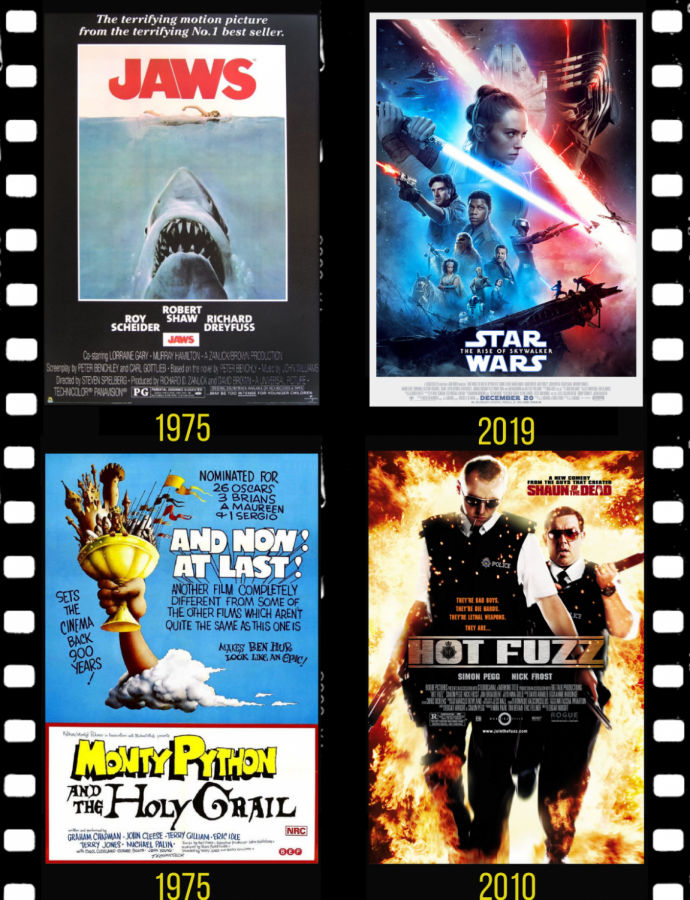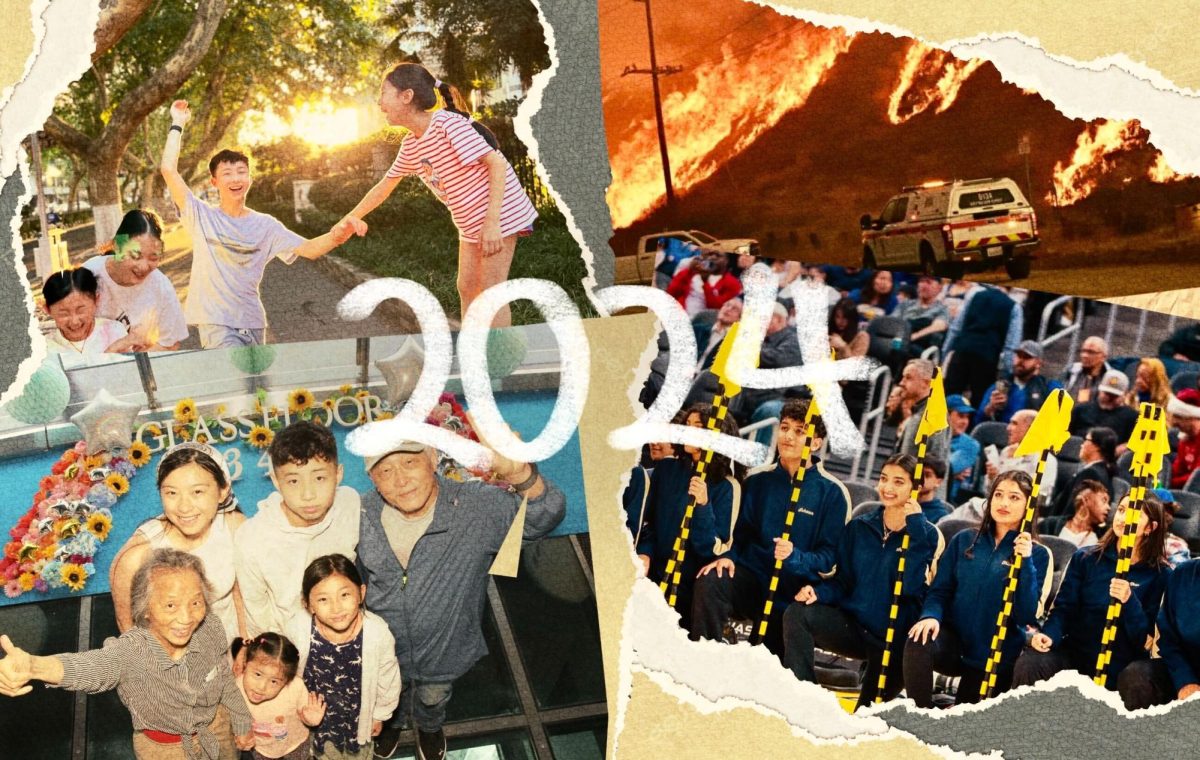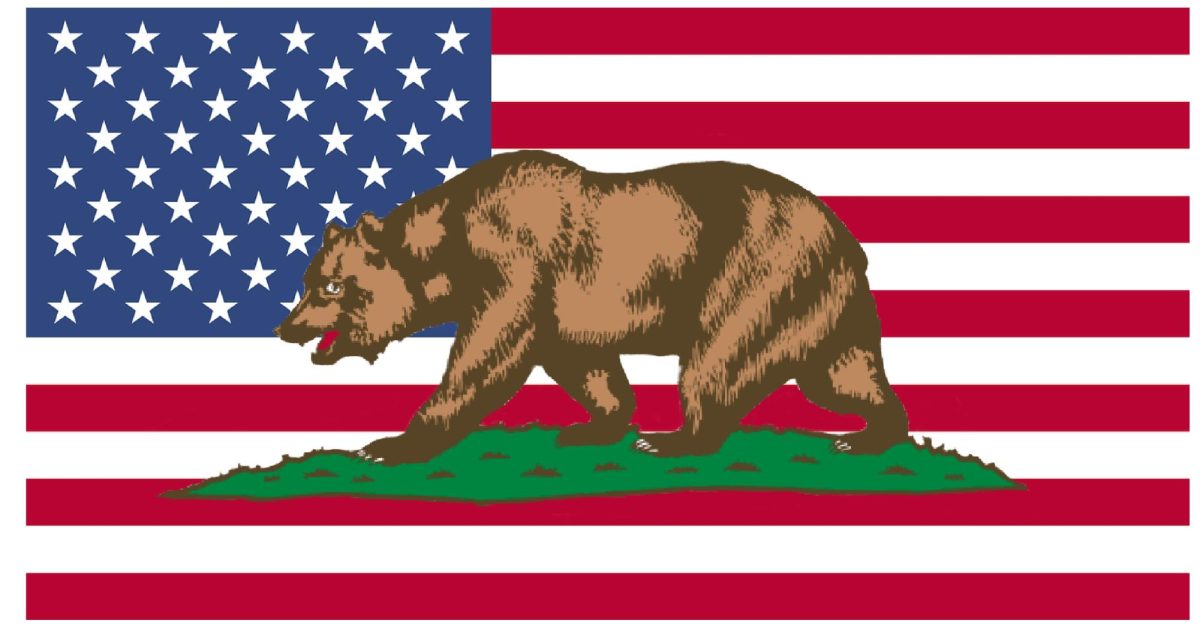Parallels between cinema in the 1970s and modern movies
Exploring the roots of contemporary films from the decade
December 10, 2021
As an adolescent during the 1970s, art teacher Jay Shelton remembers going to the theater to watch films during what he describes as a “magic era.” For him, the decade was defined by its creative freedom, with past filmmaking censorship being phased out due to changing societal norms.
“By the time we get to the ‘70s, American film is open and free, and it can be whatever you want to be,” Shelton said. “You have these young directors like Martin Scorsese, Woody Allen, Francis Ford Coppola and many more, and it just became this passion of creativity.”
According to junior Niko Kocbayindiran, this creativity during the 1970s led to the rise of absurdist comedy, which still has a large influence on modern films. He notes parallels between classics such as “Monty Python and the Holy Grail” and modern flicks like “Hot Fuzz.”
“I can see a lot of [‘70s] humor mimicked today, specifically because of the internet,” Kocbayindiran said. “For example, in ‘Blazing Saddles,’ a great comedy from the era which has aged really well. A lot of internet humor has this breakneck [comedic] pacing.”
Kocbayindiran believes that another film subject matter that was reimagined in the 1970s was the depiction of war in films. He thinks that, because ‘70s films were able to take visual creative liberties, they portrayed the horrors of war and the effect of bloodshed on individuals through movies like “Full Metal Jacket.” He also sees a shift in tone in modern, post 9/11 movies that have their premises set around war, as he identifies the 1970s and the 2010s as transitional periods for cinema, especially since they emerged from decades of conflict: the Vietnam War in the 1960’s and the war against terror in the 2000s.
“Specifically, pre-9/11, just to bring up the heavy topic, you’ll see films like ‘Independence Day,’ which have a lot of humor, despite having alien invasions and humanity being wiped out,” Kocbayindiran said. “But a lot of films today are generally less comedic — they try to be more serious.”
As the 1970s allowed films to be more creative, Shelton believes that mental health represented in film during the period became closer to reality. In the modern era, English teacher Melissa Clark observes that mental health is still being portrayed in more modern films.
“There’s definitely been a lot of movies that are dealing with characters that might have some form of depression or even a [mental] illness,” Clark said. “Either those people have been in the backgrounds in the movies, or they just never been acknowledged.”
Along with the creativity came financial incentive as the blockbuster film model emerged. Today, blockbusters include superhero and action movies such as those from the Marvel Cinematic Universe. This form of franchise building accounts for a large number of films released, which Shelton believes stems from the introduction of these films in the 1970’s.
“What [blockbusters] showed was that studios didn’t have to take risks, with all these really heavy [artistically unique films],” Shelton said. “Little by little they started realizing, ‘Wait, we can just remake ‘Jaws’ or make a sequel or make it about an alligator or make it about a gorilla. We can make ‘Star Wars’ 20 times.’”
In the modern era, however, the way that blockbusters appeal to audiences has changed. According to Shelton, modern fans of blockbuster franchises base their opinions and excitement on how well a movie does financially, a shift from the 1970s when the people who cared about box-office earnings were in the film industry. Additionally, Clark points out that excitement on social media has an influence on whether or not she watches a certain movie in theaters.
“If a movie gets really hyped, I’ll tend to watch it because I want to know what’s going on,” Clark said. “Even if it’s not good, I feel like I need to go see it to understand what everyone’s talking about.”
Overall, Shelton attributes the use of themes and ideas from the 1970s, such as the blockbuster and the critique of America’s involvement overseas, as a result of retread and lack of modern innovation in film.
“[Modern] films count on your knowledge of previous work to do the work as a shortcut for them,” Shelton said. “But when was the last time something new came out?”




























